Tasha’s Cauldron of Everything is overflowing with new player options, including some wild new summoning spells. As discussed in Spell Spotlight: Conjure Minor Elementals and Spell Spotlight: Conjure Animals, spells that summon other creatures can be some of the most frustrating spells in the game. They take up lots of time at the table by adding new combatants to the fight, sometimes even doubling the number of bodies on the field, forcing players plan out several new creatures’ actions and have a bevy of additional monster statistics on hand.
A handful of new summoning spells in Tasha’s addresses a number of common concerns that players have with summoning spells, making it faster and easier to play Circle of the Shepherd druids and School of Conjuration wizards and other summoner-type characters in your D&D games.
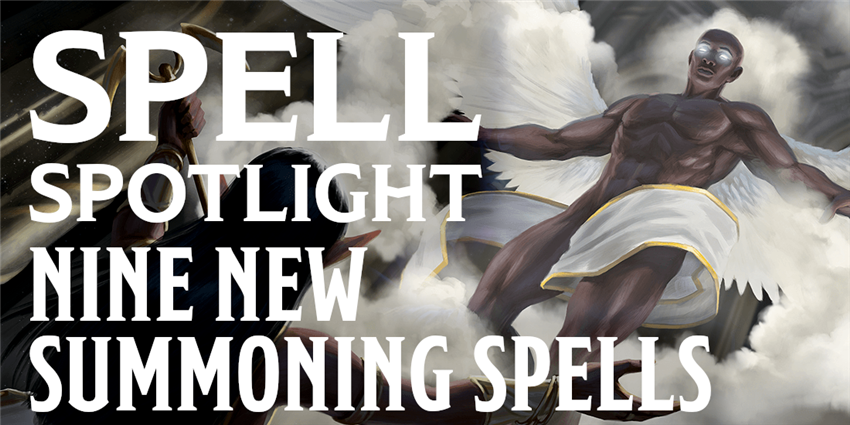
New Spells for Summoners
Tasha’s Cauldron of Everything introduces no fewer than nine new summoning spells, usable by a variety of different classes. These spells are already in your Compendium if you’ve purchased Tasha’s, but you can also purchase these spells individually by scrolling down to the Spells section on the Tasha’s Cauldron of Everything product page on the D&D Beyond Marketplace. In order of spell level, these spells are:
- Summon beast, a 2nd-level spell for druids and rangers
- Summon fey, a 3rd-level spell for druids, rangers, warlocks, and wizards
- Summon shadowspawn, a 3rd-level spell for warlocks and wizards
- Summon undead, a 3rd-level spell (the only necromancy spell of the bunch) for warlocks and wizards
- Summon aberration, a 4th-level spell for warlocks and wizards
- Summon construct, a 4th-level spell for artificers and wizards
- Summon elemental, a 4th-level spell for druids, rangers, wizards, and warlocks of the Fathomless patron (water only)
- Summon celestial, a 5th-level spell for clerics and paladins
- Summon fiend, a 6th-level spell for warlocks and wizards
These spells range from 2nd to 6th level, and give characters of a variety of different classes the ability to summon creatures from almost every type in the game. Notably, humanoid, dragon, giant, ooze, and plant are missing—though there’s probably a good reason for most of those creatures not to appear in this list of conjurations. It would be cool to summon a gloopy ooze or a minor drake to help you fight, though, wouldn’t it?
Have you created a summoning spell for oozes or dragons in the D&D Beyond Homebrew tools? Share it in the comments!
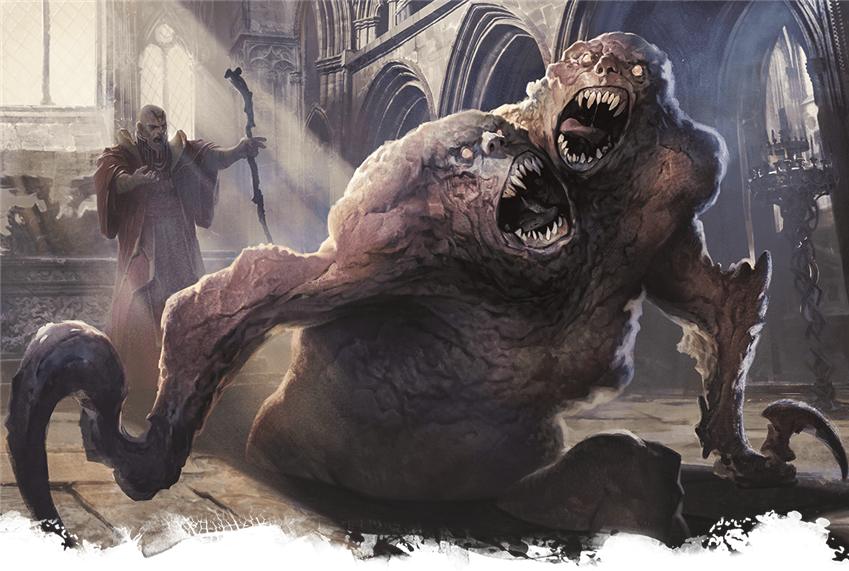
These spells share a number of similarities. Notably, they all summon a single creature, have a casting time of 1 action, last as long as you concentrate on them up to a maximum of 1 hour, the spell ends when the creature is reduced to 0 hit points, and you can conjure the creature within 90 feet of the caster. They also all require an expensive material component which, notably, is not consumed when you cast the spell. So, once you spend money on your component, you can use it to cast the spell as many times as you want. If you look closely, you’ll notice that the cost of this special material component is a number of gold pieces equal to the level of the spell × 100. So, the 2nd-level spell summon beast requires a golden acorn worth 200 gp, while the 6th-level spell summon fiend requires a ruby vial worth 600 gp.
Also, these creatures’ proficiency bonus is always equal to yours, and their power scales based on the level at which you cast the spell. That makes these spells some of the only spells in fifth edition Dungeons & Dragons that scale in power based on your character’s level—to say nothing of the fact that they also scale in power based on your spell level!
Let’s take a quick look at the summon beast spell for an example of how these spells work!
Summon Beast
This 2nd-level spell is available to druids and rangers. When you cast it, you call forth a bestial spirit, and choose if the beast you summon is aquatic, aerial, or terrestrial. Other than that choice, its cosmetic appearance is entirely up to you. You’ll find that this is a common theme among these new summoning spells, too; their stats are identical no matter what appearance you decide this spirit creature takes.
This beast’s hit points, movement speed, and its unique trait varies based on what type of environment it belongs in. Land creatures have a climb speed and high hit points, and have Pack Tactics. Air creatures have low hit points, a fast flying speed, and the enviable Flyby trait. Finally, water creatures have a swimming speed, high hit points, the Pack Tactics trait, and the ability to breathe underwater—but of course, they can’t breathe on land.
This beast is Small size, about the size of a large terrier, an eagle, or a small seal. They have relatively low Armor Class and hit points, but make up for it with a powerful attack and useful offensive traits like Flyby and Pack Tactics. Their Multiattack trait lets them make a number of attacks per turn equal to half the spell’s level—since this is a 2nd-level spell at base, they can only make one attack per action, but if you cast it using higher-level spell slots, they can make two attacks with a 4th-level slot, and so on.
As you can see, each of these new summoning spells allow you to customize your conjured creature on the fly, choosing certain aspects of them to suit the situation, and even improving their power with increased AC, hit points, attack bonuses, and damage based on the level you cast the summoning spell at. This is highly customizable, but also requires you to do some quick napkin math at the table, so be prepared by getting your creature’s stats ready while your friends are taking their turns before you!
Every one of these spells has a variety of different forms for your creature to take, giving you the ability to conjure the right creature for the task when you need to.

Summon Fey
This 3rd-level spell, for druids, rangers, warlocks, and wizards, summons a fey spirit that is skilled at debuffing enemies and making them easier for you and your allies to defeat. You choose a mood for the fey when you summon it, Fuming, Mirthful, or Tricksy. Each of these moods grants the fey a debuffing power that it can use when it uses its Fey Step bonus action. (Though, the fuming fey is just good at attacking, since it’s so angry.)
Summon Shadowspawn
This 3rd-level spell for warlocks and wizards conjures a horrid creature from the Shadowfell to do your dark bidding. You choose an emotion when you summon it, Fury, Despair, or Fear, which grants it new abilities to aid in offense, debuffing, or stealth, respectively. This shadowspawn is an ugly, misshapen, and vaguely humanoid creature, like a grotesque thing out of a nightmare.
Summon Undead
This 3rd-level spell for warlocks and wizards calls forth an undead spirit to plague the living. When you summon it, you choose if the undead is ghostly, putrid (like a festering zombie), or skeletal. Ghostly undead are mobile creatures skilled at debuffing enemies by frightening them, while putrid undead are likewise strong debuffers with an aura that causes creatures to be poisoned and an attack that can paralyze. Skeletal undead lack the mobility of ghosts and the negative status conditions of zombies, but possess a powerful and straightforward necrotic magical attack.
Summon Aberration
This 4th-level spell for warlocks and wizards summons a creature whose spirit is drawn from the alien horrors of the Far Realm, the roiling planar power of Chaos, or the hungering stars themselves. When you summon it, you choose if your aberration is a beholderkin, a slaad, or a star spawn. Beholderkin are powerful, mobile ranged damage-dealers. Slaad are durable, regenerating melee fighters. And star spawn are so toxic to the mind, that even being near one causes creatures to suffer psychic damage.
Summon Construct
Artificers will love this 4th-level spell, because it represents their ability to deploy a powerful fighting machine of their own design. Wizards, too, can call forth a golem of their own creation or a modron from the orderly plane of Mechanus. You can choose stone, clay, or metal, with metal constructs dealing heavy damage through their heated bodies, stone constructs debuffing foes by infecting nearby creatures of flesh and blood with their stony nature, and clay creatures fighting in a berserk fury against all nearby enemies.
Summon Elemental
This 4th-level spell for druids, rangers, and wizards gives you four options to choose from! Despite the many different options to choose from, the differences between these elementals feel less significant than the differences between other summoned creatures. They generally only affect a movement type, a type of damage resistance, its attack’s damage type, and the rarely useful Amorphous Form ability. The Fathomless warlock can cast this spell, but can only summon water elementals. Given how similar the four elementals summoned by this spell are, this isn’t much of a restriction.
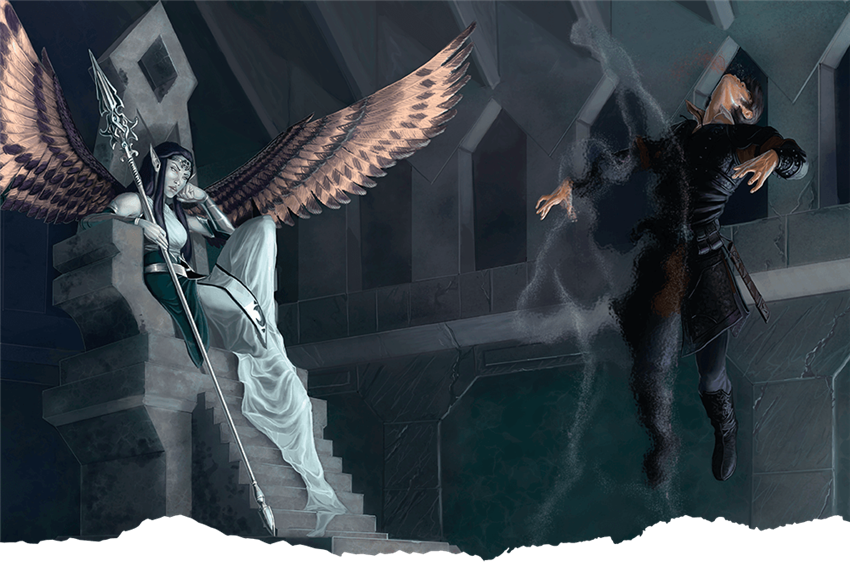
Summon Celestial
The power to summon angels to is granted to clerics and paladins with this 5th-level spell. When you summon a celestial with this spell, you can gain access to one of two types: Avenger or Defender. Avengers are powerful, mobile damage dealers with their Radiant Bow, and Defenders are tanky protectors with the ability to heal whenever they attack with their Radiant Mace. Once per day, either of these types of celestials can confer a small amount of healing upon another creature.
Summon Fiend
Beyond the shining light of heaven lives the gruesome decadence of fiends. Available to wizards and warlocks, this 6th-level spell allows you to summon forth a demon, a devil, or a neutral party in the war to control the cosmos, a yugoloth. These fiends are all quite different, with demons being wild terrors in combat that die as explosively as they lived. Devils are flighty ranged combatants, hurling flame while they fly out of range of enemy attacks. And yugoloths are evasive combatants who warp around the battlefield while tearing chunks out of their foes with their claws.
What summoning spells do you want to use? What creatures will you call forth from the beyond to do your bidding? And what class do you most want to play, now that these spells are at your disposal?
Create A Brand-New Adventurer Acquire New Powers and Adventures Browse All Your D&D Content
 James Haeck is the lead writer for D&D Beyond, the co-author of Waterdeep: Dragon Heist, Baldur's Gate: Descent into Avernus, and the Critical Role Explorer's Guide to Wildemount, a member of the Guild Adepts, and a freelance writer for Wizards of the Coast, the D&D Adventurers League, and other RPG companies. He lives in Seattle, Washington with his fiancée Hannah and their animal companions Mei and Marzipan. You can find him wasting time on Twitter at @jamesjhaeck.
James Haeck is the lead writer for D&D Beyond, the co-author of Waterdeep: Dragon Heist, Baldur's Gate: Descent into Avernus, and the Critical Role Explorer's Guide to Wildemount, a member of the Guild Adepts, and a freelance writer for Wizards of the Coast, the D&D Adventurers League, and other RPG companies. He lives in Seattle, Washington with his fiancée Hannah and their animal companions Mei and Marzipan. You can find him wasting time on Twitter at @jamesjhaeck.








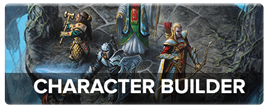
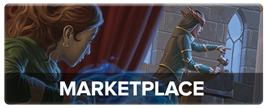
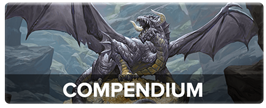
-
View User Profile
-
Send Message
Posted Jan 5, 2021They already only summon one creature, at least the new ones from Tasha's. Also, these aren't just for Conjurers.
The concentration thing is really annoying, especially at higher levels when monsters deal dozens of damage in a single hit, or upwards of a hundred if they only have one attack. The DCs are in the 20s 30s and 40s. It basically means only Conjurers can use summoning spells effectively if they want to go into the front lines, which Conjurers really aren't built for. Maybe a homebrew feat that gives you Focused Conjuration?
-
View User Profile
-
Send Message
Posted Jan 6, 2021Don't forget Sorcerers! Clockwork Sorcerers get Summon Construct, and Aberrant Mind Sorcerers get Summon Aberration
-
View User Profile
-
Send Message
Posted Jan 6, 2021If you combine some of these summoning spells with other conjuration spells from the Player's Handbook and Xanathar's Guide to Everything, the school of conjuration could potentially surpass evocation in terms of damage output.
-
View User Profile
-
Send Message
Posted Jan 7, 2021They don't really combine though because they all use concentration, so only 1 st a time. I really wish summoning was less underwhelming. School of conjuration is flat out inferior to most other wizard schools. Its perks are really underwhelming too. Plus your summons never advance.
I don't think there's any overlap with school of conjuration and these summons...
-
View User Profile
-
Send Message
Posted Jan 7, 2021What was meant was make it so that you can't cast the spell multiple times (or casting multiple different summoning spells) to get multiple summons if they don't require concentration.
-
View User Profile
-
Send Message
Posted Jan 8, 2021There are better ways, but more complicated ways, to do that. "Only one spell or spell-like effect which summons, conjures, or otherwise creates monsters, objects, or environmental hazards may be active per character" but that language is much more in line with 3.5. 5e's answer is indeed Concentration.
Summons are only beneficial if they swing the action economy in the direction of players in a significant way.
-
View User Profile
-
Send Message
Posted Jan 8, 2021Yeah, my problem with concentration isn't that it exists, it's that it's too fragile. That's why I said Focused Conjuration as a homebrew feat.
-
View User Profile
-
Send Message
Posted Jan 8, 2021That exists. It's called warcaster and/or resilient con. With proficiency and 16 con you need a nat 1 to fail the check on anything under 22 damage. With warcaster, that becomes a 1/0.25 chance. At 18_19 con, the auto-success number becomes that 22. Anything less auto succeeds, and at 24 damage you need that same nat1 to fail.
Edit: I mention the 18 or 19 because 1) they're the same multiplier and 2) there's an item that sets your con to 19.
You can easily start with 16 con and proficiency with variant human, and 16 in your casting stat of choice.
Concentration has existed since at least 2nd edition (1980s) as a check to balance casting out because spells are flat out better than weapons, after a point.
-
View User Profile
-
Send Message
Posted Jan 9, 2021Same. There is a creature type for the Feywild, why not the Shadowfell?
-
View User Profile
-
Send Message
Posted Jan 12, 2021One of the main perks of the shepherd druid doesn't synergise with any of these spells. The 6th level shepherd druid feature allows the druid to add 2 additional hit die of health to the summons but these new summoning spells don't have hit die.
-
View User Profile
-
Send Message
Posted Jan 12, 2021you can't summon swarms with Conjure Animals. the spell states
so you can summon 8 beasts. 8 beasts of 1/4, 1/8, or 0. you can not summon more than 8 beasts. so the frustration in your game came from misinterpreting the spell. the DM should not allow swarms to be summoned. because its the rules, but more so cause it's ridiculous.
-
View User Profile
-
Send Message
Posted Jan 12, 2021A swarm is 1 beast statblock. Your ruling may be rules as intended, but rules as written, there's no reason you couldn't.
Rat has 1hp, swarm of rats has 24hp, ergo a swarm of rats is 24.
The best way to handle it would be to say "all 8 operate on one initiative, directly after the caster" since nobody but Lightfoot halflings can hang out in another creature's space, a max of 4 swarms could interact with a creature, the swarm quickly hinders your own party's ability to attack.
Plus, swarms have crappy to-hit and damage. You're unlikely to kill any monsters that could challenge your party, but you could slow them down to allow your crew to escape. Even with 24d20 rolls, you're unlikely to hit more than a few times, but you're not summoning 24 rats, you're summoning 8 groups of 24, each of which only has one attack, also for crap damage.
Besides , picture a druid summoning swarms if rats only to pied piper of Hamlin them away!
-
View User Profile
-
Send Message
Posted Jan 13, 2021i'm going to have to disagree there. you can't just assume a swarm of beasts is 1 beast just because it has a single stat block, that means nothing. why would a swarm of beasts have 24 stat blocks? that's illogical and makes no sense. a swarm of beasts is numbers bestS, plural. it being crappy is also irrelevant. you can summon better beasts. thats why there's options. when u summon a swarm of rats it is 24 rats not one rat. your logic is astounding. if you want to run it your way that's fine. that's the whole point of DND, to use the rules as a base. but RAW and basic deduction does not allow you to summon swarms of animals as a single beast. if it was allowed it would be stated in the spell, to which is does not. furthermore, it doesn't have a single swarm of creatures in the suggested creatures table. if swarms were allowed, they would be in there. As a final point. if you could summon swarms in place of a single beast, then a druid could wildshape into a swarm of beast,. because with your logic it's one beast with one stat block. you cannot wildshape into a swarm of beasts
-
View User Profile
-
Send Message
Posted Jan 13, 2021The statblock says medium swarm of tiny beasts. I say that the creature type is actually a swarm, and the part with the tiny beasts just helps to describe and/or classify what kind of swarm.
-
View User Profile
-
Send Message
Posted Jan 14, 20211 stat block has only the attacks mentioned. If it doesn't say it has more attacks, it doesn't.
1 swarm doesn't have 24 stat blocks, it has 1. I said it consists of 24 rats.
1 stat block =1 creature tile, you couldn't, say distract 24 enemies with 1 rat swarm.
They tinkered with beast shape swarms, they didn't do it in 5e. Wild shape and summon spells are completely separate rules that have literally nothing to do with one another. Apples =/= oranges. In 3.5 there were whole classes and alternate class features that wild shaped into swarms, that's not in 5e. But again, summoning and wild shaping are completely separate and in no way related, so I'm not sure why you'd look to that for your baseline.
You're summoning stat blocks that fill 5ft squares. Swarms fill both of those requirements. You dont want to, that's fine, but there's literally nothing in the rules that explicitly prohibits it. I'll concede that it's probably not rules as intended. It works fine in each swarm is treated like 1 creature (arranged by stat block). In what way is that any different than summoning 8 wolves or 8 badgers? Plot twist: it isn't.
You're not summoning 24 creatures you're summoning 1 instance of 24 rats which operates as one creature. Visually its 24 rats, sure, but I fail to see how one 5ft square of rats is mechanically and different than 1 goblin or wolf or any other smalll/tiny stat block of equal rating.
-
View User Profile
-
Send Message
Posted Jan 14, 2021That's a backs argument against allowing it.
-
View User Profile
-
Send Message
Posted Jan 26, 2021I generally like these spells a lot compared to the PHB summoning spells, since they're way easier to handle, and don't require extensive house-ruling like e.g. conjure animals (who chooses what exact creatures are summoned, do they have to be native to your current environment, do you need to have seen them before, do they count as seen for the purpose of Wild Shape, yada yada yada). However, if the intention was to improve "summoning" in general, I think the material costs were a critical mistake. That e.g. conjure animals is free while summon beast or summon fey cost hundreds of gold likely means that in practice, most druids will probably stick with conjure animals and accept the pain it causes themselves and their DMs, simply because they can't afford the more streamlined and less annoying version. That these spells effectively grant you additional attacks outside of your action or bonus action is indubitably powerful, but no justification for such high costs as long as the old summoning spells still do the same thing for free (and possibly better, too, considering that the larger numbers of summoned creatures, even though they're annoying to keep track of, also provide a lot of fodder and a huge action economy advantage).
To summarize, I think these spells are way better than the PHB ones on a design level, but people are unlikely to get to enjoy that since a) the new ones are made inaccessible through a huge gold tax, and b) the old spells are still better in terms of power (the latter goes mainly for druids and rangers, who have conjure animals and conjure fey. Other old summoning spells like conjure minor elementals, conjure elemental, or summon lesser demons were clunky enough to use because of either the 1-minute cast time or the complete lack of control over what is summoned and what the summons do that at least wizards will probably like the new ones better, if they can afford them between their already quite high spell copying expenditures).
-
View User Profile
-
Send Message
Posted Jan 27, 2021Is it that huge? Keep in mind you only need to gain the specified item once, after which you can cast the spell as many times as you have spell slots to cast it with, as the material cost isn't consumed by the spell.
It might slow down acquisition of Summon Beast a little since it's the lowest level summon spell at 2nd level, but most of the others are high enough level that you should be able to save up for the material(s) you need.
-
View User Profile
-
Send Message
Posted Jan 27, 2021It really depends on what kind of campaign you are running. If you get a lot of treasure and places to spend it, it isn't a bad deal. If you're playing a super gritty campaign where you don't get much treasure, costly components can be a real handicap.
-
View User Profile
-
Send Message
Posted Jan 27, 2021Even with a super gritty campaign you can still save up for things; and if your DM is running a really resource starved campaign, just ask them if you can waive or reduce the material cost for the summon spell, or even pay for it in some other way (e.g- must burn a 1st level or higher slot in place of the material cost).
If your campaign isn't using the DMG recommended rewards progression and item rarities then you should absolutely rebalance costs accordingly.